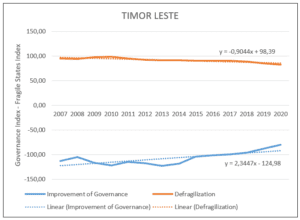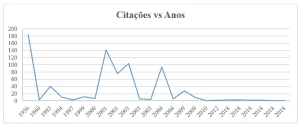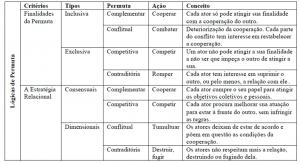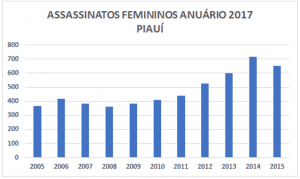REVIEW ARTICLE
CARVALHO, Rogério Galvão de [1], LEAL, Cicero Pereira [2]
CARVALHO, Rogério Galvão de. LEAL, Cicero Pereira. A discussion of replacing the economics of crime. Revista Científica Multidisciplinar Núcleo do Conhecimento. Year. 06, Ed. 09, Vol. 06, pp. 141-152. September 2021. ISSN: 2448-0959, Access link: https://www.nucleodoconhecimento.com.br/social-sciences/economics-of-crime
ABSTRACT
Given the existence of the criminal economy (industry), which recruits, selects, trains and trains agents, as observed in some regions of Brazil, in addition to contributing to high levels of crime in these regions, there was a need to develop an assertive public policy in order to minimize the negative impacts of this industry on society. Thus, this article presents a contribution to the discussion of the possibility of replacing the economy (industry) of crime by the legally constituted economy (industry), a customized public policy that can contribute to regional development and fight against crime at the same time. With a review of the literature on crime economics, it provides understanding the central idea of this proposal for discussion for evaluation of the substitution process. The leading question of the research is “why don’t brazil’s subnational governments take into account the substitution of the criminal economy by the legally constituted economy as public policy?” the article aims to promote a debate that allows the transformation of the regional economy with the incentive of the development of the local economy taking advantage of the economic vocation, and the resources destitution of the confiscation and transfer of criminal activity, to promote the replacement of the “criminal economy” by the “legally constituted economy”, including non-traditional activities such as: creative, solidarity and circular economy. The article aims to propose a debate on the possibility of replacing the “crime” economy with the “legally constituted” economy, as an auxiliary alternative to combat crime and, simultaneously, the promotion of economic development in the violent regions of Brazil. The methodology was a theoretical analysis with fulcrum in the literature of crime economics and in the negative correlation between economic development and crime as demonstrated in the course of the research.
Keywords: Crime Economics, Economic Development, Regional Economy.
1. INTRODUCTION
This article intends, through the comparison of the levels of violence and the degree of economic development of a region, to establish concrete bases for the discussion and proposition of an important chapter in differentiated industrial policy for Brazil. From the identification and mapping of both the economic vocation of the region and its criminal stain.
It is known that there is a very strong negative correlation between economic development, especially industrialization (which is pointed out as the most successful process in the generation of employment, income and economic sustainability of recent human civilizations) with crime levels. Taking into account the literature on the economics of crime, which contextualizes criminal action as any economic action, where the actions of agents account for incentives or punishments.
This proposal consists of a discussion on the public policy of replacing the economy (or industry) of crime by the legally constituted economy (industry), as a complementary alternative in helping to combat crime, especially in the most violent regions, and at the same time the promotion of regional economic development.
From the territorial delimitation of the criminal stain, policymakers could invest in the gradual replacement of the crime industry: (1) drug trafficking, narcotics and human beings; (2) theft and theft; (3) misway and smuggling; (4) forgery; and so on. by strong government incentives (fiscal, credit and even economic) in local productive arrangements, or in the economic potentials of the region, for the absorption of production factors (idle) arising from the fight against the criminal economy (industry). This proposal would be the discussion with fulcrum in the idea that criminal conduct, with rare exceptions, occurs because of incentives to agents, as advocated by economic theory, in the economic analysis part of law.
As there was the confiscation or transfer, gradually and constantly, of the resources (financial, logistical, technology and personnel) of that industry (criminal) to the State (by police actions or judicial decisions) the process would take place, gradually, recursive and growing. The government, through incentives (tax, credit and even economic), would promote the economic activity legally constituted in that region, with the goal of developing it in the following points: (i) education (basic, fundamental, technical and higher); (ii) health (low, medium and high complexity); (iii) public safety; (iv) industrialization and investments in local productive arrangements or in the economic vocation of the region.
In a statement, the proposal aims to encourage theoretical and empirical discussions with a view to reducing crime, appropriating the industrial park of crime, transferring resources (through government actions, projects and programs) to the legally constituted economy, also inserting the productive sector and civil society based on the precepts of crime theory, negative correlation between economic development and crime levels.
2. THEORETICAL REVIEW
a) Theories on the causes of crime
Scientific investigations on crime pointed as an initial motivation for the individual to commit the crime two axes: (1) personal motivation; and (2) social context. Historically sociology held debates on the subject by giving significant contributions on the subject. However, from the second half of the 20th century the theme became part of the discussions of the economy.
According to Cressey (1968) the theory that tried to measure, describe or explain the behavior of the criminal, should analyze how such behaviors are distributed and move spatially and temporally.
Cano and Soares (2002) pointed out five distinct groups of theories to evaluate the theme: a) theories that treat crime from the perspective of individual pathology; b) theories that consider crime as a by-product of a perverse or deficient social system; c) theories that understand crime as a consequence of loss of control and social disorganization in modern society; d) currents that defend explanations of crime due to situational factors or opportunities and e) theories centered on homo economicus, that is, on crime as a rational activity of maximizing profit the economic approach of Gary Becker (1968), which is the one that interests us in this article.
According to Shaefer and Shikida (2001) the so-called Economic Theory of Crime, initiated by Gary Becker, has as premise that the decision-making of individuals in relation to committing crimes aimed at financial profits is an activity or sector of the economy, like any other.
According to Britto (1999), Gary Becker’s hypothesis predicts that an increase in the likelihood of effective punishment of a citizen should substantially reduce the potential number of crimes he will commit. This premise establishes that the individual who commits an economic crime can be considered an “entrepreneur” of any branch of economic activity, its primary objective is the maximization of profit.
Also according to this author, in this “market” there is a great risk of that individual suffering some kind of sanction (fine or imprisonment) or dying. Becker (1968) assumes that the criminal individual, according to his degree of risk aversion decides how much of his time to allocate between a legal or illegal economic activity. Thus, if his expected usefulness in committing a criminal act is greater than the usefulness he could obtain in the legal market, he chooses to commit the offense.
According to Scotti (2007), another important issue, based on the hypotheses of the Economic Theory of Crime (by Gary Becker), the individual who commits crimes to obtain financial advantage can be considered as the traditional Homo Economicus, which is guided solely by the search for the maximization of its expected usefulness taking into account all available information.
According to Halicioglu (2012), high unemployment rates can affect crime rates. Unemployment can act as a motivating agent of crimes because of the worsening economic situation of individuals, who have an incentive to commit them to maintain the pattern of consumption observed before the increase in unemployment.
In addition, according to Franco (2016), international contributions to crime theory have increased in recent decades, through investigations with both cross-section data and time series analysis (WOLPIN, 1978; CRAIG, 1987; TRUMBULL, 1989; ZHANG, 1997, among others) or through estimates with panel data (WOLPIN, 1980; CORNWELL and TRUMBULL, 1994; among others).
In the course of this theoretical review, some of the results obtained, for an elective question from the authors, are presented with the most relevant studies on the approach to corroborate the discussion of the substitution of the crime economy by the legally constituted economy.
b) Economic Approach to Crime
According to Neto (2006), the economic approach focuses on the individual who makes decisions, that is, the emphasis is on the choices made by the economic agent. The essence is that to commit the crime, the economic agent comcants the costs and benefits involved in the act. In short, in the decision-making process, the assessment will be whether the net return of criminal action is greater than net return of legitimate similar action, that is, if the benefit gained by the crime is greater than that acquired by legal means (work, loan, etc.).
The initial predictions in this sense, in which economic science begins to effectively evaluate the economics of crime, were made by Becker (1968), who treats psychopaths as an exception and assumes that criminal action is associated with predictable and rational stimuli, whose equation is related to any other economic activity: (1) costs and returns; (2) certainty/uncertainty of punishment.
The model of this author (Rational Criminal Model – RCM) recommends that the risks and high expected returns should be observed:
E [u] = p U (Y – f) + (1- p) U(Y)
Where: U (.) is the utility function of the individual; (p) is the probability of conviction; (Y) result obtained with the crime; (f) fines and penalties.
For Neto (2006), Gary Becker mathematically proves that the relationship between the probability of being convicted (p) and fines and punishments (f) is negative, which ultimately generates incentive to the individual for criminal conduct.
For Posner (1982), since the economic approach demonstrates that it is possible to maintain a rational behavior, although devient of established social norms. Then, fines or penalties, in view of misconduct, should start from the microeconomic logic, that is, increased the cost of engaging in illegal activity, by the higher dosage of the fine and the penalty and by the greater certainty of the application. Thus, it will induce more and more individuals to reduce involvement in such activities. Only those who still perceived the benefits would continue, exceeding the higher costs.
In addition, taking into account economic incentives (or disincentives) for criminal practice, several empirical work on public policies was carried out combining investments in public security and increased economic development (BITU, 2008; CERQUEIRA AND LOBÃO, 2002; COELHO, 1988; and PAIXÃO, 1988) observing historical series, corroborating the idea that criminal activity is reduced when legally constituted economic activity increases, that is, when there is economic development in the analyzed region.
It is necessary to record that not everyone agrees on gender, number and degree with Gary Becker’s ideas. Gibbons (1982), for example, asserts that the decision to commit crimes does not always follow the proposed reasoning. According to the author, the decision to commit crime is much more connected to the social context, so it would be a normative decision.
c) Public Replacement Policy
According to Carvalho; Leal e Souza (2021) a public policy of economic development should have as premise the socioeconomic transformation of a region, creating sustainable conditions for job creation, increase and distribution of income, from the identification, mapping and georeferencing of the economic vocation. According to Pitangui et al. (2019), The investigation of the behavior of the economic vocation enables planning and contributes to regional economic development.
For Carvalho and Leal (2021) it is of paramount importance to choose good indicators in the monitoring phase (monitoring, evaluation and adjustment) of the implementation of public policies, in order to obtain more assertive results, in relation to the measurement of the performance of public policies of the central agenda of the government, with this, it is possible to infer that the process of replacing the criminal industry by local industrialization must involve “a task force”, systematic, recursive and systemic, among government agencies of public security, education, professional qualification, economic development, health and others; of the productive sector (Sistema S, Federation of Industry, Commercial Association, Universities, Faculties and Research Institutes and others) and Civil Society (CUFA, OAB and professional councils, religious community, OSCIPS and others) in order to integrate the economic development model with a focus on industrialization and productive investments (of the legally constituted economy). Perhaps for all this, there is little interest in including a chapter on replacing the “crime economy” in the development, formulation and implementation of this public policy.
The theoretical and empirical discussion for this theme, proposed in this article, has as premise that takes into account the hypotheses of the economic theory of crime about the relationship between economic incentives and criminal action, which are also observed the data: (1) both on homicides, in the atlas of violence, produced by the Institute of Applied Economic Research – IPEA; (2) the ranking of industrial participation produced by the (CNI) National Confederation of Industry; and (3) as the human development index – HDI (2017 data).
Then, it is verified, as a rule, that the better the HDI, the less violent the federation unit, for example the States: São Paulo (SP), Santa Catarina (SC), Minas Gerais (MG) and Paraná (PR) has the best HDI and are the least violent. On the other hand, the Brazilian states with the worst HDI, as a rule, are also the most violent: Bahia (BA), Alagoas (AL), Pará (PA) and Sergipe (SE).
Similarly, the higher the industrial participation of the Brazilian state in GDP, the higher the HDI record. At the same time, fewer homicides were recorded for these Brazilian states. Examples: the largest participations in the industry according to data from CNI, São Paulo (SP), Santa Catarina (SC), Minas Gerais (MG) and Paraná (PR) coincide with the highest HDI.
Thus, it is observed that the inversely proportional correlations of (1) high HDI with (2) low records of crime and (3) of the high degree of industrial participation in Brazilian GDP, with (1) the best IDHs. So, the proposal of the article would be a public policy of replacing the economy (industry) of crime, by the legally constituted economy (industry).
The proposal is also based on the literature of crime economics, brought in the chapter of the theoretical framework, which makes it clear that the criminal obeys the same precepts of incentives and punishments of traditional economic theory, that is, evaluating risks and returns about actions.
3. CONCLUSION
This investigation aimed to promote a debate based on the theoretical evaluation of the idea of combating, with intelligence, the large criminal structures of business, with the purpose of replacing them with the economy legally constituted based both on the hypotheses of the economic theory of crime, and on the negative correlation between economic development and crime. The central idea of the discussion is the proposal of the gradual and constant transfer of the resources (financial, logistical, Technology and personnel) of that industry (as it is transferred) to the State (by police or judicial actions) and, later, to incentives (tax, credit and even economic) for the promotion of the legally constituted with the goal of developing: (i) education (basic, fundamental, technical and higher); (ii) health (low, medium and high complexity); (iii) public safety; (iv) industrialization and investments in local productive arrangements or in the economic vocation of the region.
The suggestion for research on the subject should have as its starting point the collection, organization, systematization, and intelligent sharing of accurate data on: (a) the identification, mapping and georeferencing of the crime industry (drug trafficking, trafficking in women, theft, theft, etc.); (b) the location of criminal stains (in particular production, storage, storage and distribution); and (c) the process of selection, recruitment, training and qualification of the (criminal) workforce of children, young people and adults.
Therefore, discussions on the process of replacing the criminal industry with local industrialization should involve a task force (productive sector, government and civil society), in order to integrate the economic development model focused on industrialization and productive investments (of the legally constituted economy).
Another point of this debate is the challenge of replacing (recursive ly and gradually) the criminal economic activity, successful from the point of view of efficiency, but harmful to society, by the economic activity related to the economic vocation of the region with the participation of stakeholders. In this case, the participation of the government, civil society, and representatives of the productive sector in this work is fundamental to success.
REFERNCES
BECKER, G. S. Crime and punishment: an economic approach. Journal of Political Economy. V. 76, nº 01, 1968, p. 69 – 217.
BECKER, Gary. S. 1968. Crime and Punishment: An Economic Approach. Journal of Political Economy. Reprinted in Chicago Studies in Political Economy, edited by G.J.Stigler. Chicago and London: The University of Chicago Press, 1988.
BITU, G. B. T. Análise dos principais determinantes da criminalidade no Brasil: 2001 – 2005. Universidade Federal do Ceará. Curso de Pós-graduação em Economia – CAEN, Fortaleza, 2008.
BRITTO, Tatiana A. Desemprego e crime: uma análise de séries de tempo para o Distrito Federal: 1992 a 1996. Brasília: Dissertação (Mestrado), 46 p. Departamento de Economia – universidade de Brasília, 1999.
CANO, I., SOARES, G. D. As teorias sobre as causas da criminalidade. Rio de Janeiro: IPEA, 2002, mimeo.
CARVALHO, Rogério Galvão de. LEAL, Cícero Pereira. A Importância Da Escolha De Indicadores Para Avaliação Eficiente De Políticas Públicas. Revista Científica Multidisciplinar Núcleo do Conhecimento. Ano 06, Ed. 04, Vol. 09, pp. 213-221. Abril de 2021.
CARVALHO, R. G. et al. Política pública de atração de investimentos em Brasília: erros e acertos. Revista Científica Multidisciplinar Núcleo do Conhecimento. Ano 06, Ed. 02, Vol. 01, pp. 21-59. fevereiro de 2021.
CERQUEIRA, D. R. C., LOBÃO, W. A. J. L. Condicionantes sociais, poder de polícia e o setor de produção criminal. IPEA, 2002, mimeo.
COELHO, E. C. A criminalidade urbana violenta. Dados. Revista de Ciências Sociais, Rio de Janeiro: Iuperj, 1988.
CRAIG, S. G. (1987) The Deterrent Impact of Police: An Examination of a Locally Provided Public Service. Journal of Urban Economics. v.21, p.298-311, 1987.
CRESSEY, D. P. Crime: causes of crime in International Encyclopedia of The Social Sciences, v. 3. The Macmillian Company & The Free Press Ed. (David L. Sills ed.), 1968.
CORNWELL, C.; TRUMBULL, W. N. (1994) Estimating the Economic Model of Crime with Panel Data. The Review of Economics and Statistics. v.76, n.2, p. 360-366, maio 1994.
FAJNZYLBER, P. (2002). ”What causes violent crime?” European Economic Review 46(7): 1323-57.
FAJNZYLBER, P.; ARAUJO JUNIOR, A. F. (2001). Violência e criminalidade. In Lisboa, M. B. & Menezes Filho, N. A., editores, Microeconomia e Sociedade no Brasil, p. 333– 394. Contra Capa, Rio de Janeiro.
FAJNZYLBER, P., LEDERMAN, D., LOAYZA, N. (1998) Determinants of Crime Rates in Latin America and the World: An Empirical Assessment. Washington, DC: World Bank, World Bank Latin American and Caribbean Studies, 1998.
FRANCO, Cleiton. Revisão de Literatura e Evidencias Empíricas Sobre Economia do Crime. Revista UNEMAT de Contabilidade, Volume 5, Número 9, julho de 2016.
FURTADO, Giovanna Maia. Aplicação da economia do crime no Brasil. São Paulo, 2007. 79 f. Dissertação (Mestrado) – Faculdade Ibmec São Paulo, 2007.
GIBBONS, T. (1982). The utility of economic analysis of crime. International Review of Law and Economics 2 (2): 173-192.
HALICIOGLU, F. Temporal causality and the dynamics of crime in Turkey. International Journal of Social Economics, v. 39, p. 704 – 720, 2012.
LÖSCH, A. The economics of location. New Haven, Yale University. 1954.
NETO, Giácomo Balbinotto. Teoria Econômica do Crime. UFRGS/PPGE, 2006
PAIXÃO, A. L. Crime, controle social e consolidação da democracia. In: REIS & O´DONNELL (eds.). A democracia no Brasil. Vértice: São Paulo, 1988.
PITANGUI, C.P., TRUZZI, O. M. S., & BARBOSA, A. S. Arranjos produtivos locais: uma análise baseada na participação das organizações locais para o desenvolvimento. Gestão & Produção, 2019. 26(2), e2579. https://doi.org/10.1590/0104-530X-2579-19
POSNER, Richard A. The Economics of Justice. Cambridge: Harvard University Press, 1982.
SCHAEFER, Gilberto; SHIKIDA, Peri A.F. Economia do crime: elementos teóricos e evidências empíricas. Revista de Análise Econômica/UFRGS, edição 36, ano 19, setembro de 2001.
SCOTTI, Ricardo Jefferson. Finanças comportamentais no Brasil. São Paulo, FAAP, 2007, 70p.
TRUMBULL, W. N. (1989). Estimations of the Economic Model of Crime Using Aggregate and Individual Level Data. Southern Economic Journal. v.56, p.423-439, 1989.
WOLPIN, K. (1978). An Economic Analysis of Crime and Punishment in England and Wales, 1894-1967. Journal of Political Economy. v.86, p.815-840, 1978.
______. (1980) A Time-Series-Cross Section Analysis of International Variation in Crime and Punishment. The Review of Economics and Statistics. vol.62, p.417-423, 1980.
ZHANG, J. (1997) The Effects of Welfare Programs on Criminal Behavior: A Theoretical and Empirical Analysis. Economic Inquiry. v.35, p.120-137, 1997.
[1] PhD student in Business Sciences, Universidad de Ciencias Epresariales y Sociales, Buenos Aires, UCES, Master in Economics from the Catholic University of Brasília UCB, specialist in Public Law from Estácio de Sá University, Bachelor of Economics from the University Center of Brasilia CEUB. ORCID: https://orcid.org/0000-0002-7461-4609.
[2] PhD student in Social Sciences, UNISINOS, Master in Economics from UnB, Bachelor of Economics from UnB. ORCID: https://orcid.org/0000-0003-4082-295X
Submitted: August, 2021.
Approved: September, 2021.




